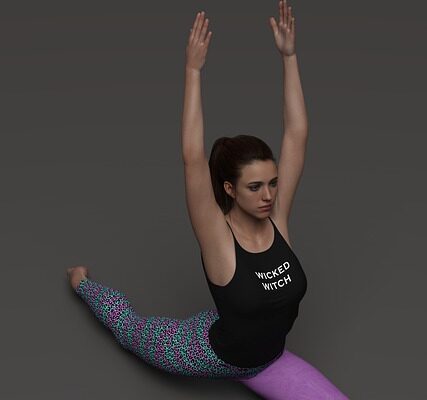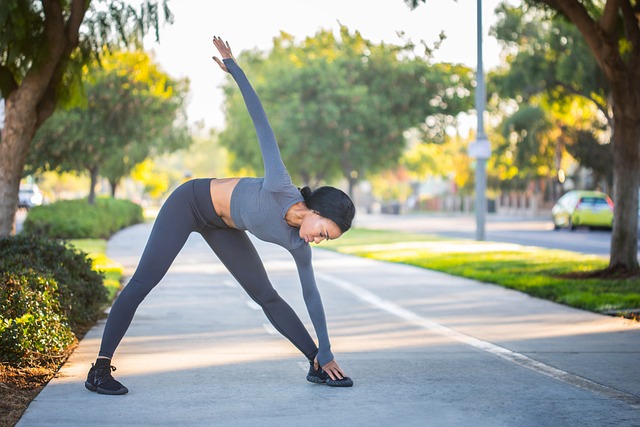Flexibility is the ability of your body to move across a range of motion. Flexibility improves the range of motion and allows for greater functional movement.
Aside from improving the range of motion, working to become more flexible has many other advantages, such as lowering fatigue and improving overall well-being. Yet, many individuals ignore the value of flexibility, believing it is just important for athletes.
Integrating flexibility exercise into your daily routine may result in greater fitness for daily activities as well as improved overall health and well-being. If you frequently experience muscular fatigue, muscle stress, or poor joint health, this could be a clue that flexibility exercises would be beneficial to you.
Here’s what you need to know about flexibility and how you can work it into your daily life.
Range of Mobility and Flexibility
People frequently confuse flexibility with a range of motion. The mobility of a joint in all directions without pain is referred to as the range of motion (ROM). The ability of the muscles, tendons, and ligaments to extend across the range of motion (ROM) is referred to as flexibility.
Performing flexibility exercises to improve your range of motion reduces your chance of injury and helps you avoid joint tightness and pain.
Furthermore, having a strong range of motion can have an impact on your other workouts and activities. You are more likely, for example, to utilize perfect form and stimulate your muscles, making your exercise safer and more effective.
Regular stretching activities are one approach to increasing flexibility. Stretching should be done as part of a regular workout program, but it should also be done afterward.
Stretching after sitting in your workplace chair for an extended period of time is also important.
Hyper-Flexibility
There is also such a thing as being excessively adaptable. This is known as hyper-flexibility or joint hypermobility. A connective tissue condition, such as Ehlers-Danlos syndrome, could cause hyper-flexibility (EDS). Joint hypermobility occurs when you can move a joint beyond its typical range of motion.
Excessive range of motion can result in joint pain, edema, dislocation, joint breaking, fatigue, and widespread pain. These symptoms usually appear during or after physical activity. If you feel you have hyper-flexibility, it is critical to consult with a healthcare specialist for a diagnosis and treatment plan.
The Advantages of Flexibility
Flexibility issues can have a negative impact on your health and well-being in a variety of ways. You may have muscle fatigue, muscle stress, and poor joint health. Improving your flexibility allows you to avoid these issues and receive a variety of rewards.
Muscular Condition Will Improve
Flexibility-enhancing activities such as foam rolling and dynamic stretching can help you avoid injuries and enhance the condition of your muscles. Foam rolling can assist in loosening tight muscles and is especially beneficial if you have constricted or tight muscles that do not release completely.
By rolling along the length of your muscle, you encourage it to return to its original and intended length. Long-term flexibility will be improved by having muscles that are neither tight nor constricted.
Stretching improves blood flow to the muscles. This increased circulation nourishes your muscles while also aiding in the removal of waste metabolites. Increased circulation might help you recover faster, especially after a strenuous workout. This is especially critical if you have had injuries such as a pulled or strained muscle.
Practicing dynamic stretching before your workout and foam rolling afterward are two options. According to research, dynamic stretching increases muscle strength while decreasing muscle stiffness.
Before your workout, try this Dynamic Warm-Up.
Improves Balance
Many people take having a strong sense of balance for granted. But having a strong balance might help you be lighter on your feet and perform better in sports. It is particularly important as you get older because it can assist in preventing injuries and falls.
Increasing flexibility and balance can also assist in strengthening and stabilizing the core. In one study, participants over the age of 65 were instructed to participate in stretching and mobility exercises twice a week for 12 weeks. They had better balance, which reduced their chances of falling. Participants improved their flexibility and lumbar strength as well.
Injury Risk is Decreased
Flexibility, when combined with exercise, can help to alleviate back pain and stiffness. Aerobic exercise enhances blood flow to soft tissues and muscles, while flexibility improves muscle, ligament, and tendon range of motion. Injury is less likely when muscles and surrounding components are well-nourished and flexible.
Stretching the muscles in the back, hip flexors, and hamstrings may help lower the chance of injury, according to a study. Stretching can also aid you with everyday actions such as walking, bending, and reaching.
Stretching lengthens muscles and boosts blood flow (both of which aid in rehabilitation and healing), so investing a few minutes in mild, targeted stretching may pay dividends in the long term.
Flexibility Training Varieties
Stretching exercises of four varieties can help you increase your flexibility: static stretching, dynamic stretching, triggered isolated stretching, and myofascial release.
Excessive stretching should be avoided. Pushing yourself too far or stretching beyond your capabilities may stymie your success. Take it slowly and steadily, and stop if you feel any discomfort.
Static Stretching
Static stretching is getting into a position that lengthens specific muscles. To do this, hold the position for 30 seconds, to begin with, gradually increasing to 60 to 90 seconds. Start the stretch and stop when you feel some minor discomfort (not pain). Maintain the position for the specified amount of time.
If you experience pain, you have overstretched. Bring it back a little bit. Gently extricate yourself from the strain. Stretch your key muscles, muscles used during workouts, and those that require flexibility improvement.
Dynamic Stretching
Dynamic stretching is when you move in a way that stretches your muscles and joints. Stretching like this serves as a warm-up. It increases power, leap, and sprint speed.
Look at the motions you’re preparing for in whatever activity or sport you’re doing to create a dynamic stretching program. Runners, for example, can perform hip circles, lunges, and leg pendulums. Swimmers can engage in shoulder rolls and arm circles.
Isolated Active Stretching
Stretching a muscle while simultaneously tightening and holding the opposite muscle for a couple of seconds and then releasing is known as active isolated stretching. Each time, you go a little further into the stretch and repeat 8 to 10 times.
To contract one muscle, active isolated stretching requires resistance (such as a resistance band or even just your hands). Start in a kneeling lunge position, for example, to stretch your quads. Move your front knee forward while keeping your hands on your hips. You’re squeezing your glutes while stretching your quads in this stretch.
Myofascial Release Therapy
Foam rolling is a sort of myofascial release that focuses on the fascia, which is a connective tissue, to promote flexibility and relieve tension. Foam rollers can be used on muscles in your legs, arms, and back. To roll your calf, for example, begin in a sitting position with the foam roller under your calf. Then, for 30 to 60 seconds, move your lower leg back and forth over the roller.
To Conclude
Stretching on a daily basis increases flexibility, which is important for joint health and overall well-being. Stretch every day to increase your flexibility, whether by static stretching, active stretching, foam rolling, or a mix of the three.
Stretching several times a day, especially if you sit a lot at work, can be useful. If you suffer recurrent joint discomfort or muscular tiredness, or if you discover hyper-flexibility, see your doctor. They can assist you in determining the source of your discomfort and providing a treatment plan.


